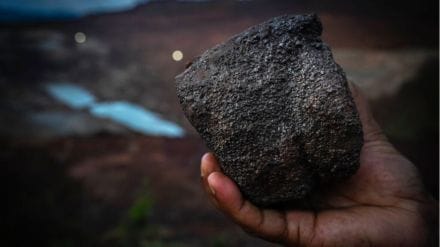The Cabinet on Wednesday approved downward revision of the royalty rates for a host of critical minerals namely caesium, graphite, rubidium and zirconium. All these are widely used in the green energy sector.
The new rates broadly range from 2-4%, as against 12% at present, for all these minerals, except graphite, where the duties are tonnage-based right now. The move will promote auction of mineral blocks, thereby not only unlocking these minerals but also associated critical minerals found with them, such as lithium, tungsten, rare earth elements, niobium etc, the government said.
For caesium, the revised royalty rate now stands at 2% of Average Sale Price (ASP) of caesium metal chargeable on the metal contained in the ore produced. Similarly, rubidium, the new rate will be 2% of ASP of rubidium metal chargeable on the metal contained in the ore produced.
The cabinet approved the new rate of 2% of ASP on ad valorem basis for graphite with 8% or more fixed carbon and 4% of ASP for graphite with less than eighty per cent fixed carbon. It noted that fixing of royalty rates of graphite on ad valorem basis will proportionately reflect the change in prices of the mineral across grades.
Graphite, caesium, rubidium and zirconium are important minerals for high-tech applications and energy transition. Graphite and zirconium are also among the 24 critical and strategic minerals listed in the Mines and Minerals (Development and Regulation) Act, 1957 (MMDR Act).
For zirconium, the new rates will be 1% of ASP of Zirconium metal chargeable on the Zirconium metal contained in the ore produced.
Graphite is a crucial component in electric vehicle (EV) batteries, primarily serving as the anode material, which enables high conductivity and charge capacity. However, India imports 60% of its requirement of graphite. At present, 9 graphite mines are working in the country and further 27 blocks have been successfully auctioned.
Further, Geological Survey of India and Mineral Exploration and Consultancy have handed over 20 graphite blocks which will be auctioned and around 26 blocks are under exploration. Zirconium is widely used in various industries, including nuclear energy, aerospace, healthcare and manufacturing, due to exceptional corrosion resistance and high temperature stability, while caesium is mainly used in high-tech electronic sector, particularly in atomic clocks, GPS systems, other high precision instruments, medical instruments including in cancer therapy, etc.
Rubidium is used in making specialty glasses used in fibre optics, telecommunication systems, night vision devices etc.
Recently, the government in September has issued Notice Inviting Tender, for the sixth tranche of auction for critical mineral blocks. This also contains 5 blocks of graphite, 2 blocks of rubidium and 1 block each of caesium and zirconium.
The approval of the Union Cabinet on the rate of royalty will help the bidders to rationally submit their financial bids in auction, the government said.
The royalty rate of Graphite has been specified on rupees per tonne basis since September 1, 2014. It is the only mineral in the list of critical and strategic minerals whose royalty rate was specified on a per tonne basis. Further, considering the variations in the Graphite prices across grades, royalty of Graphite is now decided to be charged on ad valorem basis, so that royalty accruals in different grades would proportionately reflect the changes in the prices of the mineral, as per the government. In recent years, royalty rates of most of the critical minerals have been specified at the range of 2% to 4%.
